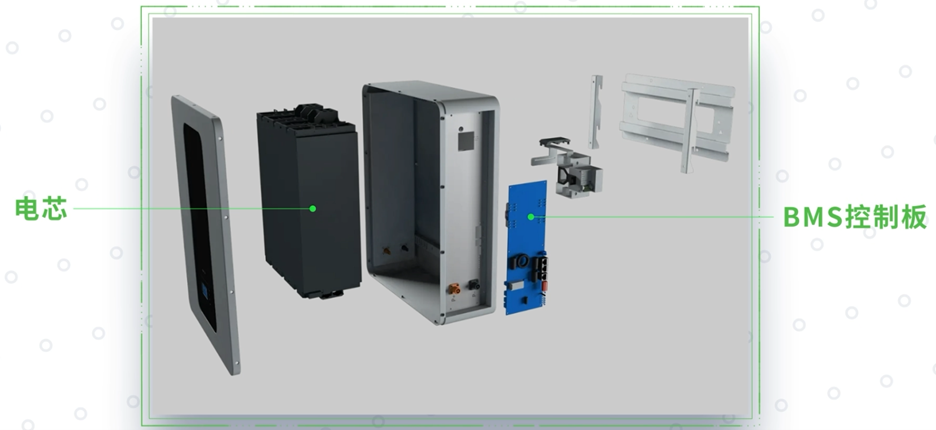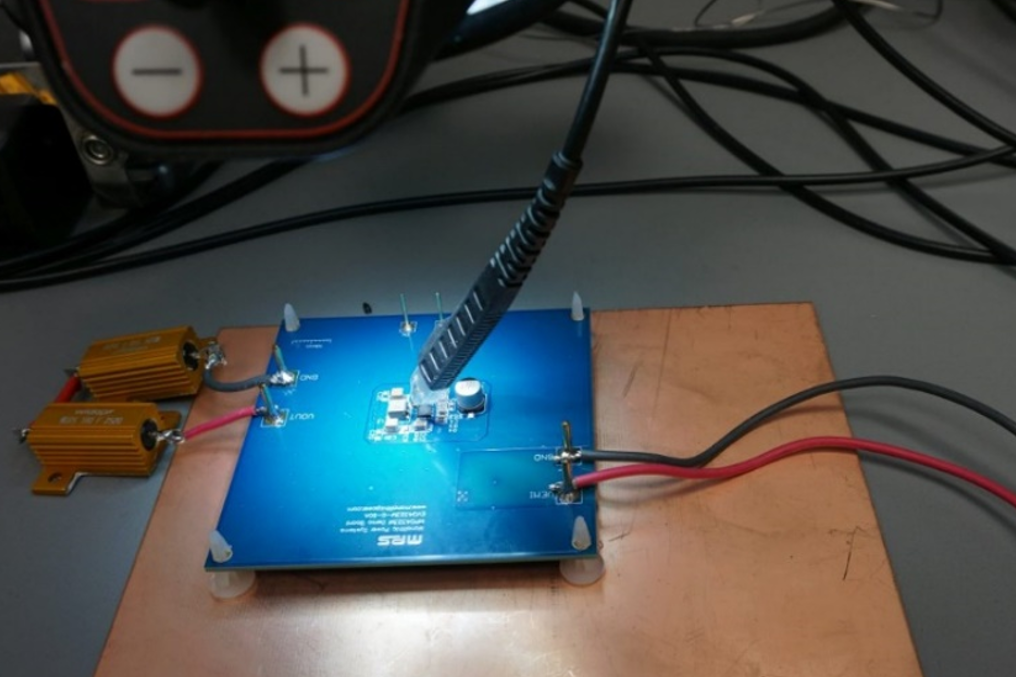Introduction to Thermal Management
Amidst today's technologically advanced automotive landscape, where myriad electronics underpin most functionalities, ensuring an optimal temperature is no longer a luxury but a requisite. A discipline needed to focus on regulating and controlling system temperatures to guarantee proper functioning and longevity is thermal management.
Definition and Importance
Definition: The essence of thermal management lies in its utilization of integrated processes and techniques to regulate and sustain the temperature of a system, guaranteeing adherence to predetermined parameters during operation.
Importance:
- Performance: Optimal functioning of electronic components and systems occurs within defined temperature ranges. You may experience altered performance, diminished efficiency, or complete system failure when deviating too much from these ranges.
- Efficiency: Semiconductors usually witness a rise in resistance as temperature rises. This will ultimately contribute to decreasing the system’s efficiency. Therefore, to preserve energy usage within acceptable thresholds, effective thermal management plays an instrumental role.
- Longevity: The wear and tear on electronic components can be enhanced by repeated and prolonged exposure to higher temperatures, that will eventually reduce the functional life of the components.
- System Integration: Various systems that interact continuously can be incorporated in modern vehicles. It is ensured by effective thermal management that the heat produced by one component does not negatively affect the performance of another.
The Role of Thermal Management in Safety and Reliability
Safety: These systems must remain operational across diverse conditions with the increasing dependence of vehicles on electronics for crucial tasks such as braking, steering, and autonomous operations. By potentially compromising the safety of the vehicle and its occupants, overheating can cause malfunctions.
- Battery Management: Any malfunction due to thermal issues can cause dire consequences, including fire risks, especially in electric vehicles (EVs), where large battery packs store crucial energy.
Reliability: Despite external conditions, consistent performance is a hallmark of reliability. Whether it is a scorching summer afternoon or a frosty winter morning, effective thermal management ensures that the same output is delivered by electronics.
- Predictable Behavior: Effective management of thermal environments ensures the consistent behavior of electronics. In feedback systems, the significance of this cannot be overstated, as unpredictability may precipitate oscillations or operational failures.
- Preventing Thermal Runaway: Certain electronic components have the potential to undergo thermal runaway, wherein their temperature rises during operation, further diminishing their efficiency and perpetuating a detrimental cycle. This potentially destructive process can be prevented by good thermal management.
At the bottom, to ensure optimal performance, reliability, and safety, thermal management is a silent guardian of automotive electronics that is continuously working behind the scenes. The role of thermal management will only become more critical as vehicles integrate more electronics with each passing year.
Heat Generation in Automotive Electronics
A dynamic environment where thermal management is mandatory has been created by the complexity of modern vehicles, particularly with the integration of various high power electronic modules and systems in EV vehicles. To make efficient thermal management strategies, it is imperative for engineers to understand the origin of heat and how it affects electronic elements.
Sources of Heat in Automotive Systems
Internal Sources
- Power Electronics: Due to high current flows, huge amounts of heat are generated by components like inverters and converters in hybrid and electric vehicles (EVs).
- Battery Systems: Due to internal resistances and chemical reactions, heat is produced by battery systems especially in EVs and hybrids during both charge and discharge cycles.
- Engines and Exhaust Systems: Internal combustion engines typically convert only 20-30% of fuel energy into useful mechanical work, with the remaining majority being dissipated as heat, posing potential challenges for adjacent electric components.
External Sources
- Ambient Temperature: Particularly on hot days, substantial external heat can be introduced by the surrounding environment.
- Solar Radiation: Temperature within a vehicle can be significantly increased by direct sunlight, affecting the internal electronic systems.
- Aerodynamic Heating: The friction between the vehicle’s surface and air can cause localized heating at high speeds, especially in performance vehicles.
Note that to collect data on ambient temperatures in every packaging location of their vehicles, automotive car manufacturers are testing their vehicles around the globe. Drawing from this information, they establish and convey the requirements to their component suppliers.
Impact of Heat on Electronic Components
Component Behavior: At different temperatures, varied behaviors can be displayed by semiconductors and electronic components. Consider, for example, how a transistor's operational characteristics can be impacted by temperature-induced shifts in its threshold voltage.
Reduced Lifespan: The aging process of components, particularly capacitors and resistors, can be accelerated by increased temperatures. Electrolytic capacitors are largely used, and higher environmental temperature dries out the electrolyte faster, so special attention must be paid to them. When an electrolytic capacitor's capacitance drops below 70% of its nominal value, it is considered to have reached the end of its lifespan. Semiconductor lifespan is usually not a factor to consider during design considerations, except for LEDs.
Increased Resistance: Internal resistance rises with temperature for many materials. Such circumstances may result in diminished efficiency due to increased heat dissipation, aggravating the heating issue, commonly known as thermal runaway.
Physical Damage: Physical damage such as solder joint cracking, delamination or component failure can be caused by extreme temperatures, especially when coupled with repeated thermal cycling (frequent transitions between high and low temperatures).
Data Inaccuracies: If sensors (particularly those responsible for crucial operations) are exposed to temperatures outside their functional range, it can give inaccurate readings, potentially endangering vehicle safety.
Engineers use a multi-faceted strategy, combining passive and active cooling, system layout, component selection, and more to tackle the ever-evolving challenges posed by heat in automotive systems. To ensure the reliability, safety, and performance of automotive electronics, understanding the sources and impacts of heat is the first step in this ongoing battle.
Thermal Challenges in Modern Automotive Systems
Today’s automotive systems present unprecedented thermal challenges in the relentless pursuit of performance, efficiency, and innovative features. The focus on miniaturization and electrification has further heightened the thermal dynamics within automotive environments, as vehicles evolve with the integration of new technology. Ensuring the operational efficiency, durability, and safety of the vehicle's electronic components and systems hinges on effectively tackling these thermal challenges.
Miniaturization and High-Density Packaging
Space Constraints: Compact design and optimized space utilization is emphasized by modern vehicles, especially those in the urban category. Densely packed components lead to limited space for heat dissipation, potentially causing hotspots within electronic systems.
More Components in Smaller Spaces: With the increasing demand for advanced features in vehicles, the number of necessary electronic components also rises. These components collectively produce considerable heat, particularly when located near each other, even though they have decreased in size.
Material Challenges: Materials utilized in miniaturized components may provide electrical and mechanical benefits but might not be optimal for thermal conductivity. Localized heating problems can arise, challenging mitigation efforts without innovative cooling solutions.
Efficiency versus Heat Dissipation: Decreasing component size can enhance operational efficiency. Nonetheless, their diminished surface areas pose challenges for heat dissipation.
Electrification and High-Power Components
Electric and Hybrid Vehicles: Moving from conventional internal combustion engines to electric drivetrains has altered the main sources of heat. In electric vehicles (EVs), heat is primarily produced from battery systems, inverters, and electric motors, whereas engines primarily produce heat through combustion. Particularly during rapid charging or high-speed operations, these components can generate huge amounts of heat that must be efficiently managed.
High-Power Electronics: High power levels are needed by modern automotive electronics, especially in EVs. Power inverters, responsible for converting DC from the battery to AC for electric motors, have the capacity to manage high current levels, resulting in notable heat production.
Battery Thermal Management: Along with generating heat during operation, batteries are also sensitive to temperature variations. To maintain lifespan, safety, and performance, ensuring optimal battery temperatures is critical. The consequences of overheating include diminished battery life and, in extreme scenarios, thermal runaway—a dangerous state where the battery is susceptible to ignition or explosion.
Effective thermal management is crucial in contemporary vehicles due to the combined challenges posed by miniaturization and electrification. In the pursuit of ensuring safe, efficient, and reliable operation of automotive electronics and to address these challenges, engineers persistently explore and apply inventive solutions, ranging from advanced materials to intelligent cooling systems.
Consequences of Inadequate Thermal Management
Grasping the significance of thermal management within automotive systems requires an understanding of the potential consequences of neglecting it. Systems and components face exposure to temperatures that can negatively impact reliability, performance, and safety without suitable thermal measures. Amidst the dynamic landscape of automotive electronics, where components frequently push their operational boundaries, even the slightest temperature anomaly has the potential to escalate into a notable issue.
Component Failure and Reduced Lifespan
Deleterious Effects on Materials: The rise in temperatures may cause electronic materials to degrade, resulting in changes to both their structural and electrical properties. For example, semiconductors are extremely temperature sensitive. The occurrence of 'thermal runaway,' a phenomenon wherein the device heats up uncontrollably, is a potential consequence of overheating, often leading to permanent damage.
Reduced Operational Lifespan: With the rise in temperature, the life expectancy of electronic components typically reduces exponentially. For every increase of 10°C beyond a component's rated temperature, its anticipated operational lifespan may be cut in half.
Performance Degradation: Reduced performance, such as slowdowns or malfunctions in electronic systems, can result from overheating. The output accuracy might be compromised in the case of processors or sensors.
Thermal Expansion and Stress: When heated, materials undergo expansion, which may induce mechanical stresses, especially if different parts of a component expand at varying rates. Mechanical failures, such as cracks or deformations in solder joints and electronic packages, can result from the repetitive expansion and contraction caused by temperature cycling.
Safety Risks
Battery Dangers: The thermal runaway mentioned above can be caused by the poor thermal management of batteries, especially in the case of electric vehicles (EVs). In extreme cases, this process can lead to batteries venting, igniting, or even exploding, presenting significant safety hazards.
Potential for Fire: The risk of fires can escalate when circuits, components, or wires become ignition sources due to overheating. Enclosed spaces such as vehicles pose an especially critical risk, as a fire can rapidly escalate into a catastrophic case.
Impaired Safety Systems: Essential safety systems like anti-lock brakes, airbags, or driver assistance systems can experience compromised functionality due to insufficient thermal management. The risk to vehicle occupants and other road users increases with such failures.
Decreased System Responsiveness: Systems that have overheated may not respond as anticipated or within the required timeframes. In cases like autonomous driving scenarios where rapid electronic response is imperative, this delay can cause accidents.
To conclude, the significance of proper thermal management transcends mere performance optimization; it stands as a cornerstone in safeguarding the dependability and safety of automotive electronic systems. Neglecting this fundamental aspect may result in catastrophic consequences, underscoring the necessity for continuous research and inventive approaches within the realm of thermal management.








直接登录
创建新帐号